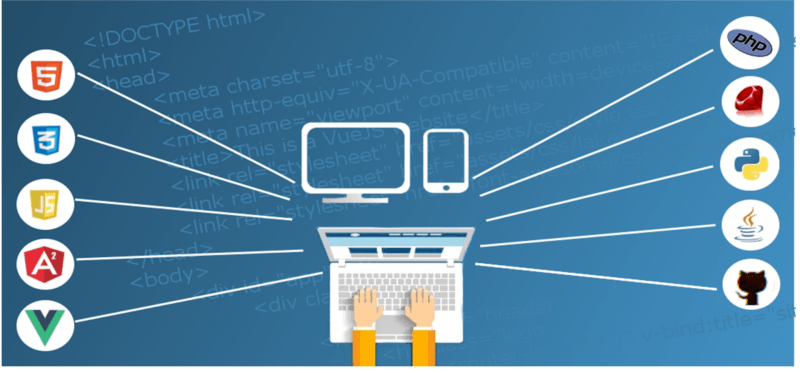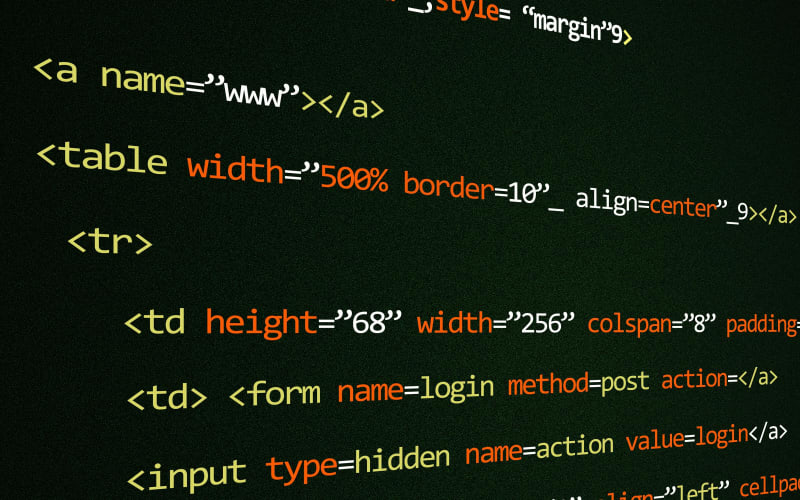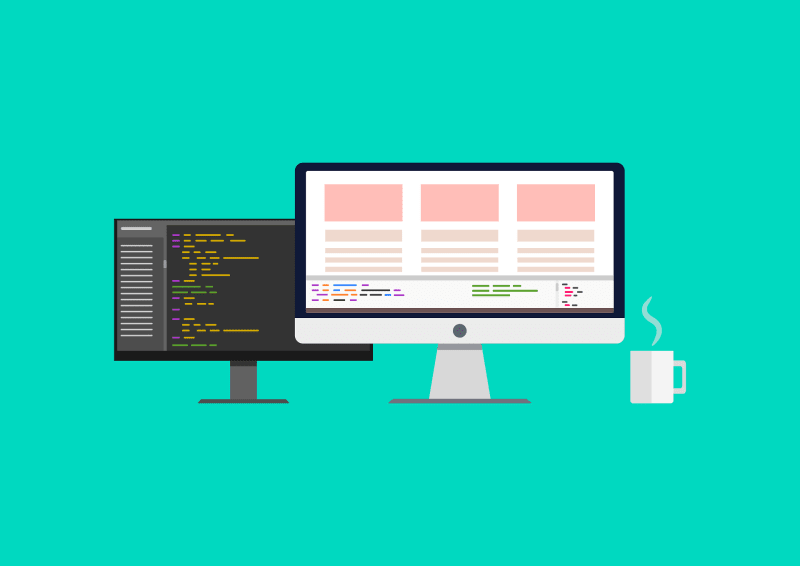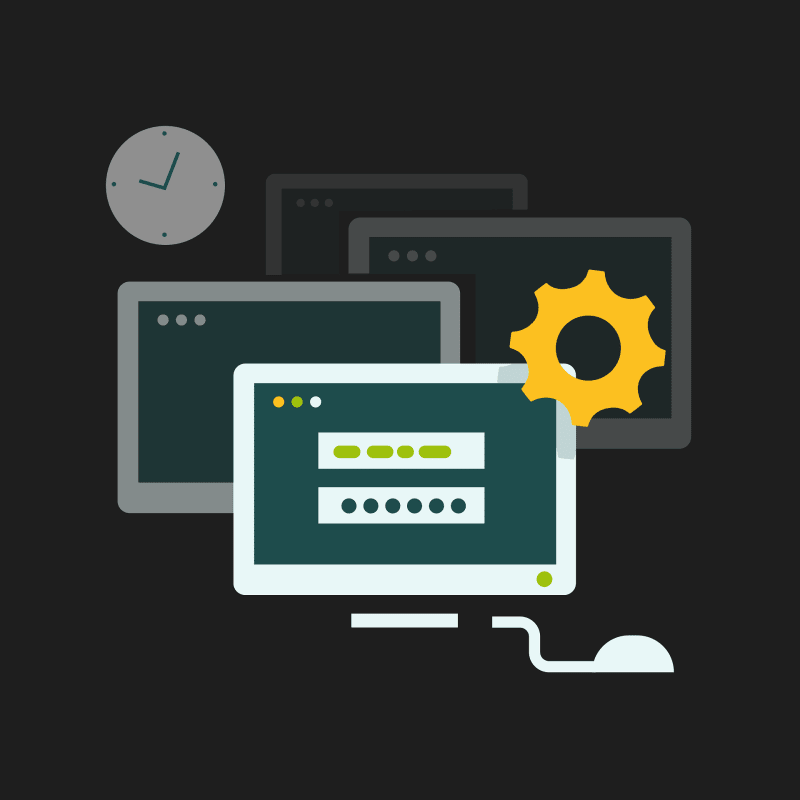Have you discovered the problem of front-end and back-end being confusing? You are not alone, we are going to discuss all about it. Just as with landing pages and websites, front-end, and back-end development are often misunderstood to be the same. But let me assure you, they have distinct roles and purposes.
What's the Deal with Frontend and Backend Programming?
Front-end and back-end programming form the dynamic pair behind every web application you interact with.
What is Front-end?
Imagine the front-end as the beautiful front of a building. It's what you, the user, see and interact with directly.
Frontend programming refers to the development of the user-facing side of a website or web application.
Think of it this way: when you're admiring a stunning website like Verpex with its smooth navigation and visually pleasing layout, you're appreciating the front-end craftsmanship. Much like our landing pages, the front-end serves as the first impression, making users click, scroll, and explore.
What is the Back-end?
Now, let us shift our focus to the back-end, which is the unacknowledged hero working behind the screen.
It is in the custody of handling requests, looking after databases, and making sure everything works smoothly.
Imagine a click-through landing page that seamlessly redirects you to another page upon clicking the call-to-action button. The back-end makes this magic happen, directing your action to the appropriate response. Just as a sales landing page optimizes the user experience for purchasing, the back-end ensures data is managed securely and efficiently.
Front-end vs. Back-end:
Just as a website and a landing page serve distinct purposes, front-end and back-end programming cater to separate features of web development.
Protecting User Experience in Frontend
Front-end programming contains the visual and interactive skills of a website. The front-end is where the focus is firmly on the user experience. The colors, typography, buttons, and layouts that engage users come alive through front-end programming. If a user marvels at a sleek interface or navigates seamlessly through an app, front-end programming is at play.
They're likened to architects crafting the front of a building—responsible for what meets the eye. A landing page's compelling design that lures visitors to click, just like Verpex's website's inviting interface, owes its charm to the skill of front-end programming.
Back-end Programming: The Center of Functionality
Let's now turn to the background and the hero at work there. The invisible engine that drives applications is back-end programming. Consider it to be similar to a building's wiring and plumbing.
Python, Ruby, Java, and PHP are all languages that back-end engineers are experts in.
When a visitor signs up, submits a form, or makes a purchase, the backend arranges these actions seamlessly, much like Verpex's website, which guides users effortlessly through pages.
Decoding the Key Differences
Let us examine the primary differences between frontend and backend so that you can completely appreciate them.
A. Concentration and knowledge
Front-end programming path around visual beauty and user interaction. Both a creative vision and knowledge of user behavior are necessary.
Back-end developers, on the other hand, revolve around data control, server functions, and application functionality.
Back-end developers are the engineers who ensure the machine works smoothly.
B. Comparing functionality with user experience
Front-end programming's primary concern is the user experience.
In the same way that a well-designed landing page entices visitors to explore further, it's about creating an atmosphere that invites them to explore more.
Back-end programming's domain is functionality. Making sure the software runs smoothly is its main concern. Data storage, complex algorithms, and form submissions are all made possible. Back-end programming is the backbone of e-commerce sites, processing transactions and controlling user accounts, more like a sales landing page with an immediate 'Buy Now' button.
C. Languages and Instruments for front-end and back-end programming
Front-end developers use HTML, CSS, and JavaScript as their creative tools. Their jobs exist as the outcome of the coding that makes websites beautiful and user-friendly.
Python, Ruby, and Java are all terminologies that back-end developers are skilled in.
D. APIs and Web Services
Backend programming involves utilizing APIs (Application Programming Interfaces) to enable communication between frontend and backend systems.
E. Appearance and Communications
Front-end programming's output is visible and interactive. It's what users directly engage with, from clicking buttons to filling out forms. Front-end developers are accountable for a website's look, organization, and overall feel.
Back-end programming, while invisible to users, is vital for functionality. It is the database that stores user data, the code that defines prices, and the algorithms that warrant efficient processes. A back-end glitch might lead to errors during checkout on an e-commerce site, despite a sleek frontend.
To store and retrieve data in backend development, databases are used.
Common types of databases include SQL (Structured Query Language) and NoSQL (Not Only SQL).
SQL databases, like MySQL and PostgreSQL, provide relational data storage and offer ACID (Atomicity, Consistency, Isolation, Durability) properties.
F. Collaboration
Front-end developers often collaborate closely with designers to bring their creative vision to life.
They specify the beginning of a powerful application, much like the base supports the countless parts of a website.
When to Utilize Front-end or Back-end Programming
Much like choosing between a landing page and a website, deciding when to employ front-end or back-end programming depends on the project's goals.
Front-end Programming: When the objective is to create an appealing user interface, engage visitors, or enhance the user experience, front-end programming is the hero. A landing page aimed at capturing leads or promoting an event thrives on front-end skills.
Backend programming, on the other hand, concentrates on managing data, processing requests, and delivering dynamic content to support the frontend functionality.
When it comes to managing data, processing transactions, or ensuring the smooth operation of an app, back-end programming is the way to go. A website's back-end technology plays an essential role in the development of multiple pages, such as those for 'About,' 'Services,' and 'Blog.'
When dividing responsibilities between frontend and backend development, factors like team size, project complexity, and individual expertise need to be considered.
Proper project management ensures that both frontend and backend components are developed with compatibility and scalability in mind.
FAQs:
Q1: What is the primary role of frontend programming?
Creating visual and interactive components of a web application is the focus of front-end programming. It is similar to creating a standard landing page to capture users' awareness.
Q2: Which programming languages are commonly used for frontend development?
Languages for the front-end projects are HTML, CSS, and JavaScript. HTML structures content, CSS styles it and JavaScript adds interactivity.
Q3: How does backend programming differ from frontend?
Backend programming is responsible for managing data and functionality. In the same way, a well-designed website with easy navigation facilitates seamless interactions and processes user requests.
Q4: Can one person handle both frontend and backend development?
Yes, some individuals have the skill and knowledge of frontend and backend.
However, specializing in one area often leads to more expertise and efficiency.
Conclusion
The differences between front-end and back-end are equal to those between landing pages and websites in that each makes an amazing impact on the digital world. The front-end displays visual allure( HTML, CSS, and JavaScript) to create a captivating user experience, while the back-end powers the functionality. Languages like Python, Ruby, and Java are used by backend developers to build the logic that operates applications.
While the frontend focuses on creating visually appealing user interfaces and enhancing user experience, the backend handles data processing, server management, and security.
The complexity behind each click, scroll, and web interaction must be figured out to appreciate the back-end. So next time you marvel at a well-designed user interface or encounter a flawlessly working online form, you will know that front-end and back-end programming are the driving forces behind the scenes.








Top comments (8)
Great article 😁
Thank you!
Nice
Thank you!
This is great!
Thank you!
Nice. Great job 👍
Thank you!